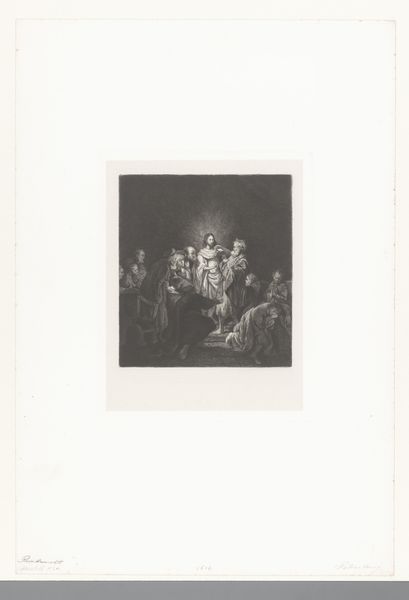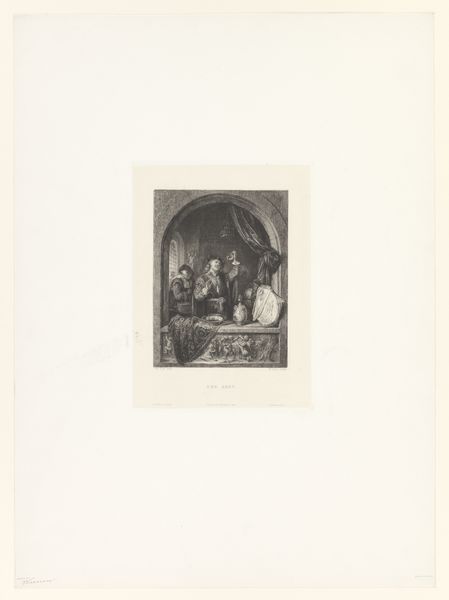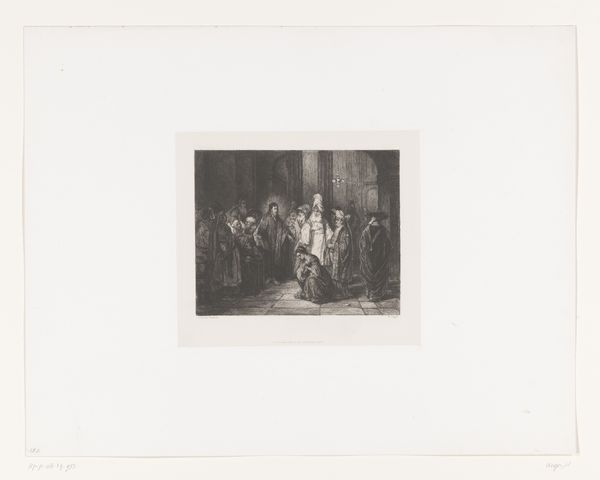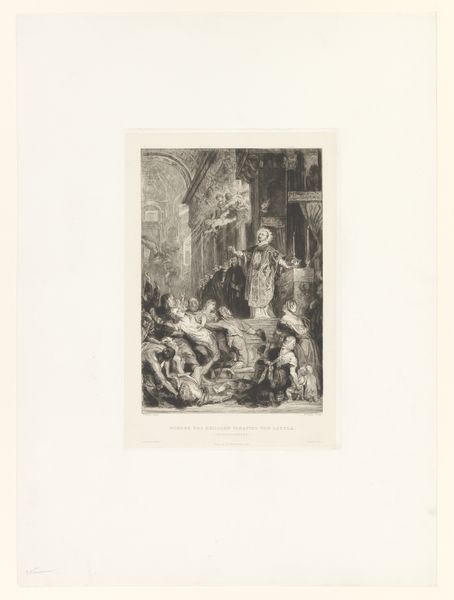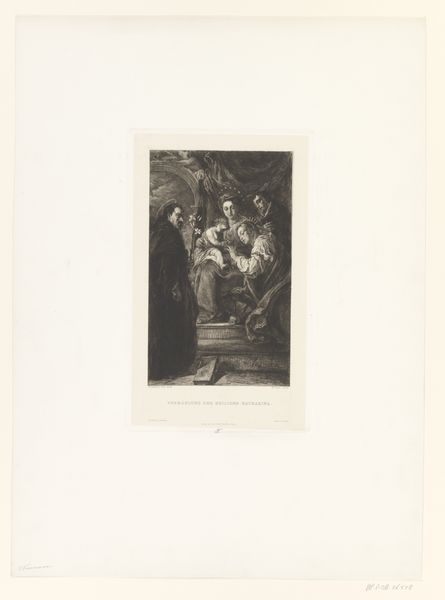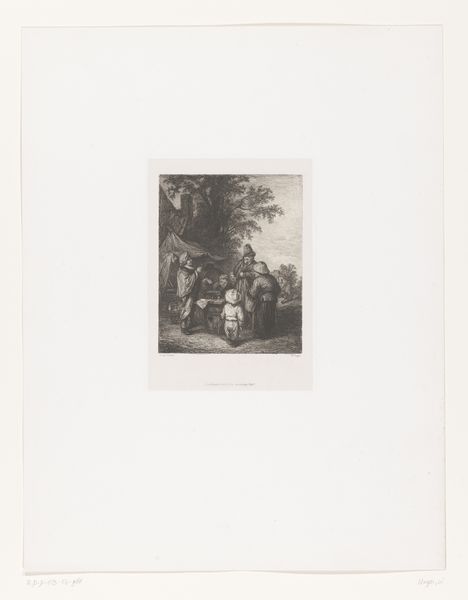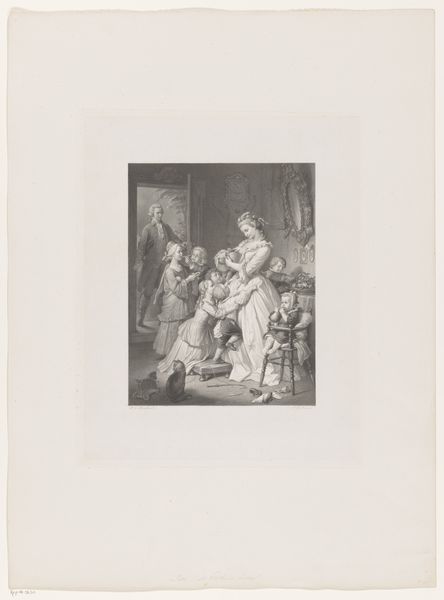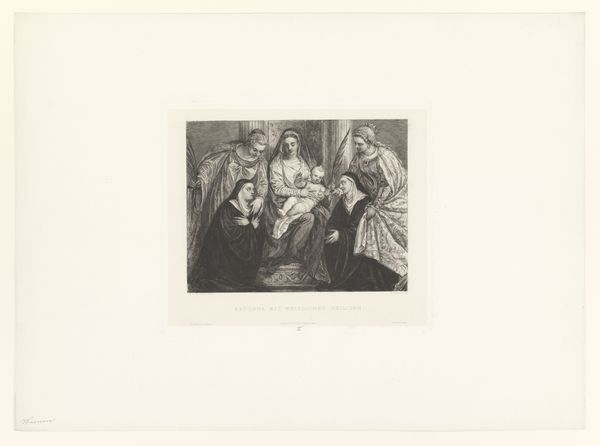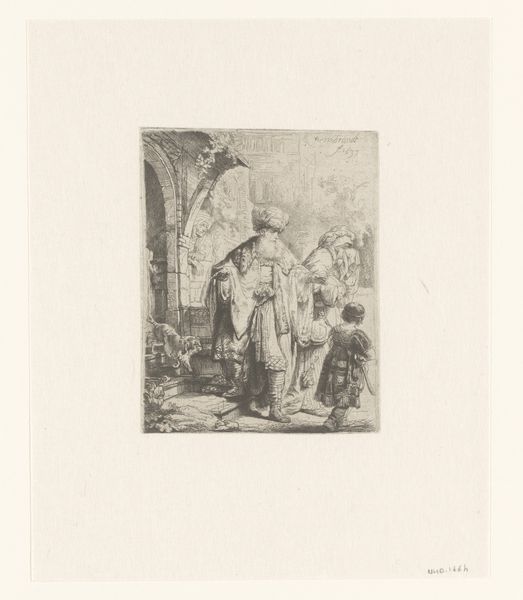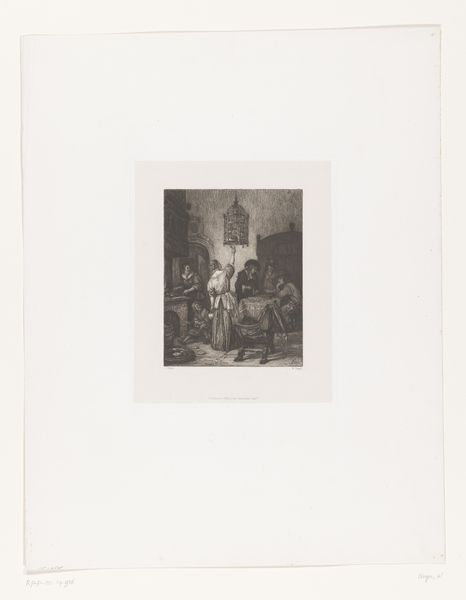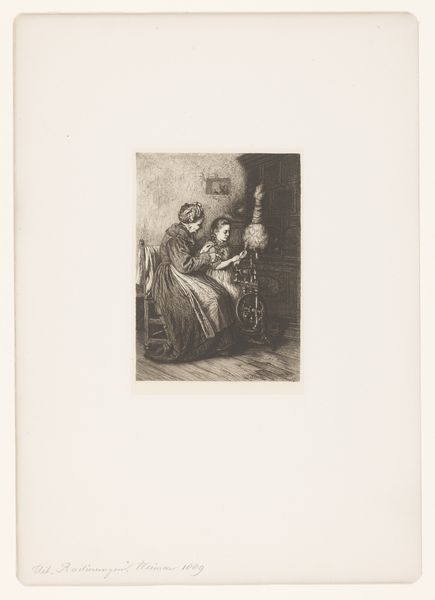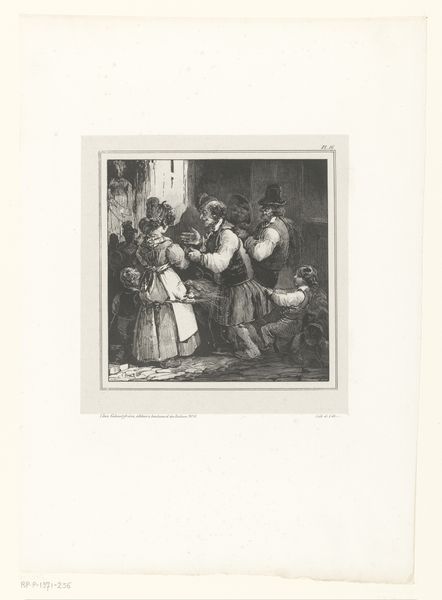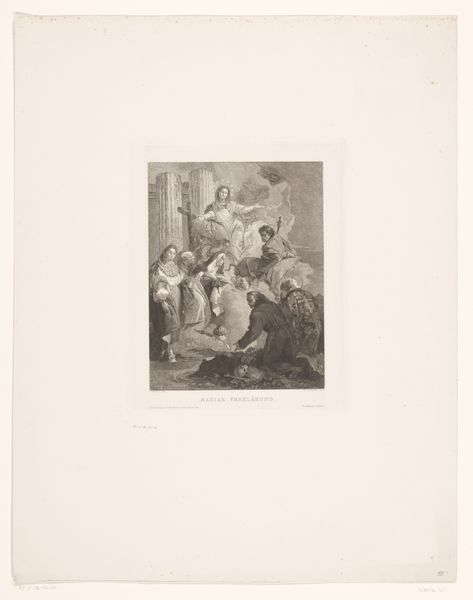
Dimensions: height 427 mm, width 294 mm
Copyright: Rijks Museum: Open Domain
Curator: Welcome. Here we have an engraving from between 1844 and 1863, attributed to S. Rosenthal: "Oude man en jonge vrouw in interieur" or, in English, "Old Man and Young Woman in Interior." Editor: It's stark, isn't it? The high contrast of the engraving gives it a really dramatic feel. You can almost feel the weight of the fabrics depicted. Curator: The piece engages with genre-painting traditions while subtly referencing historical narratives, fitting neatly into the Romanticism movement's revival of emotional intensity and dramatic subject matter. This can be read on multiple levels, mirroring broader societal norms related to the roles and expectations imposed on both genders, even an exploration of power dynamics within domestic life during this time period. Editor: Yes, those gowns look lavish, and the interiors…clearly meant to project wealth and status. But consider the process: the meticulous work involved in engraving these tiny details. Who was this print made for? A wealthy collector or wider circulation to emulate an elite lifestyle? Curator: Print culture made imagery more broadly accessible and thus, politically powerful. This print, housed at the Rijksmuseum, speaks to both its own era, and the evolving notions of access that have shaped museums’ collections ever since. These pieces ended up being quite instrumental in shaping social ideals. Editor: Exactly, it highlights how material processes influenced distribution and consumption, even potentially altering tastes within emerging markets for art. I’m really curious about who created the original scene being copied, and whether the engraver introduced interpretative elements when creating a more reproducible item. Curator: Good question. Ultimately, “Old Man and Young Woman in Interior” offers insights into 19th-century society’s concerns and ambitions as perceived through domestic portrayals within visual culture. Editor: It really does lay bare the tensions between aspirations, materials, labor and its impact within contemporary material conditions. It’s all here.
Comments
No comments
Be the first to comment and join the conversation on the ultimate creative platform.
